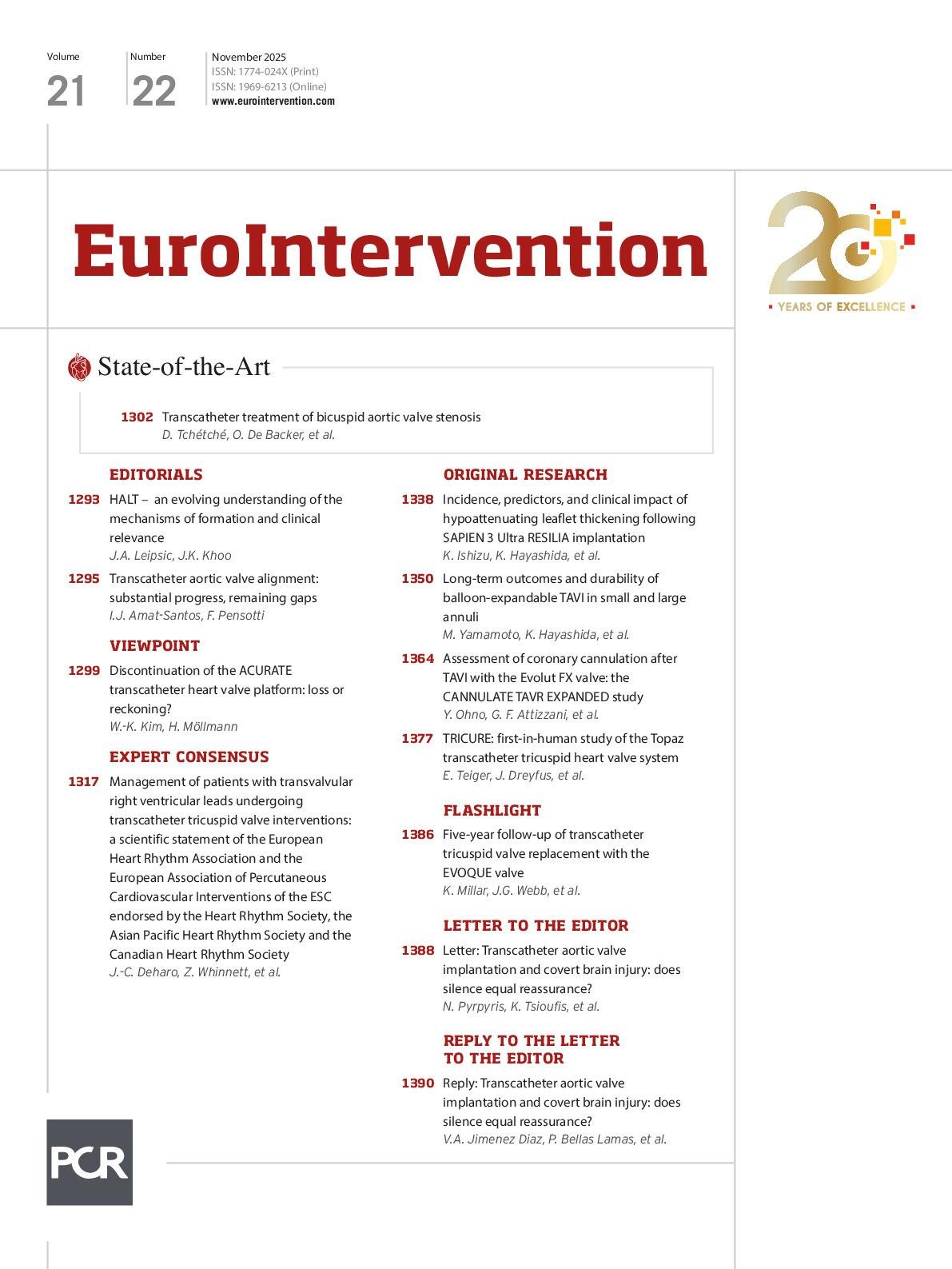Since its initial description in 20151, hypoattenuating leaflet thickening (HALT) has been the subject of ongoing research. The incidence of HALT has been reported among all commonly used transcatheter heart valves (THVs) and various surgical bioprosthetic valves, based on data from nested registries of randomised trials as well as prospective and retrospective registries2. Its clinical significance is still under investigation. While the relationship of HALT with stroke and mortality is an area of question34, there is growing evidence that HALT is associated with higher valve gradients and earlier valve degeneration56. Potential mechanisms of HALT development have been proposed, ranging from reduction of neosinus flow, asymmetric valve expansion, and biological mechanisms such as endothelial dysfunction6. Recognising this, it is generally accepted that valve design plays a potential role, and it is crucial not to assume that the incidence and mechanisms are the same across valve platforms6. Despite advancements in knowledge, there remain outstanding questions. In this issue of EuroIntervention, Ishizu et al7 look to provide answers. The authors took a subset of...
Sign up for free!
Join us for free and access thousands of articles from EuroIntervention, as well as presentations, videos, cases from PCRonline.com

